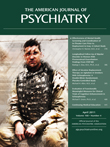It was a pleasure to read the more than 500 pages that make up the body of Textbook of Pediatric Psychosomatic Medicine . It is an important book that provides a comprehensive review of much of what is known that is relevant for providing child and adolescent psychiatric consultations in a pediatric setting.
In the introduction of the book, Dr. Gregory Fritz presents a historical perspective of the field of pediatric psychosomatic medicine. For readers who have devoted their lives to pediatric consultation-liaison psychiatry, his reflections of how far the field has come in the past 30 years provide a poignant beginning to this review of the current state of the field. The book is divided into four portions. Part I deals with broad issues related to pediatric psychosomatic medicine, including legal and forensic concerns. Part II is organized by “referral questions,” which provide an interesting look into the process of effectively dealing with the problems with which pediatricians most often want help. Part III is titled Specialties and Subspecialties and addresses clinical issues that are relevant to caring for children with a wide range of pediatric illnesses. The final section is devoted to treatment and is divided into four categories: psychotherapy, family interventions, psychopharmacology, and preparation for procedures. While all four parts have real value, I found that my favorite section was the review of the specific pediatric illnesses. These chapters are written from the perspectives of truly expert child and adolescent liaison psychiatrists.
There are several illnesses that are particularly well covered. The chapter written about infectious diseases focuses on four important infectious illnesses and describes the psychosocial issues related to each of their clinical presentations. This chapter is also interesting from a historical perspective. In the past, we restricted our horizon to the seven psychosomatic illnesses. During these years, infectious diseases were clearly catalogued in the “real medical illness” category.
The coverage of gastrointestinal disorders was also excellent. In this chapter, “gut feelings” are explored from a broad perspective, extending from idiopathic pain to serious, life-threatening Crohn's disease. The chapter succinctly highlights key clinical issues that can be missed in more superficial reviews. There are also good discussions of the evidence-based treatments that are currently available.
The chapter on respiratory diseases was of particular interest to me given my long-standing interest in asthma. It was a refreshing experience to review the clear and straightforward presentation of the complex psychophysiological factors that are associated with respiratory diseases. This is a particularly useful chapter for young clinicians who are learning to deal with complicated patients with such illnesses. The chapter is quite practical and focuses on an impressive synthesis of the empirical literature.
This is a comprehensive work that involved 70 different contributors. Consequently, it is inevitable that there is some variability in the consistency with which each topic is reviewed. However, the one disappointment that I experienced repeatedly while reading this excellent textbook was the absence of the consideration of genetic variability in conceptualizing either disease prognosis or approaches to treatment. I turned eagerly to the chapter on endocrine and metabolic disorders, thinking that the exciting progress that has been made in our understanding of the genetic basis of diabetes mellitus would surely be summarized. While the chapter correctly states that both “environmental and genetic factors have been implicated” in diabetes mellitus, the fascinating implications are left unstated.
This is an excellent book. It is particularly valuable for young clinicians who are embarking on a career that will involve the treatment of physically ill children. It is both a valuable reference and an important source of practical guidance.

